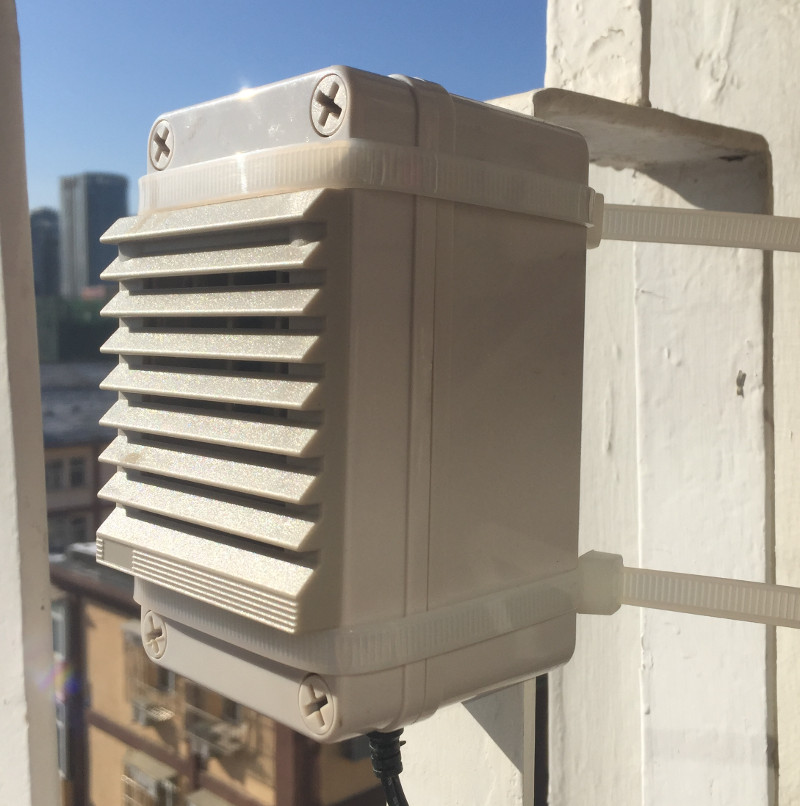
Hinweis: Dieser Artikel wurde im Jahr 2013 verfasst. Obwohl der Dylos-Monitor immer noch ein gutes Produkt ist, gibt es heutzutage viel bessere und erschwinglichere Überwachungsprodukte, sodass wir den Kauf des Dylos-Produkts nicht mehr empfehlen.
Sie können sich beispielsweise die Produktpalette der GAIA-Luftqualitätsüberwachungsstationen von ES Labs ansehen.
Das Dylos Air Particle Counter-Experiment läuft noch, und zwar schon seit 50 Tagen. Letztes Wochenende, als die Luftverschmutzung in Peking dank starker Nordwinde sehr niedrig wurde, nutzten wir diese Zeit als Gelegenheit, eine Wartungspause durchzuführen ... am Dylos-Monitor selbst.
Der Grund dafür ist, dass der Dylos-Monitor, auch wenn er auf jeden Fall ein gut konzipiertes und konstruiertes Gerät ist (wir meinen es ernst), möglicherweise nicht so gut konzipiert ist, um der starken periodischen Luftverschmutzung in Peking standzuhalten.
Alles begann mit der Feststellung, dass die Korrelationsdiagramme zwischen dem Dylos- und dem BAM-Monitor tendenziell einige systematische Anzeichen einer Nivellierung über 38.000 Partikel (≥0,5 µ) zeigen. Ein solches Sättigungssymptom kann die Folge eines Engpasses bei der internen Luftzufuhr sein, der durch „gesättigte“ Luftkanäle verursacht werden kann. In Zeiten starker Luftverschmutzung ist dieses Phänomen völlig normal, da große Mengen an Feinstaub durch den Luftkanal strömen müssen.
Kein Wunder also, dass wir nach dem Öffnen des Dylos-Monitors bestätigten, dass die internen Luftkanäle aufgrund einer Staubansammlung in den letzten 50 Tagen definitiv gesättigt sind:
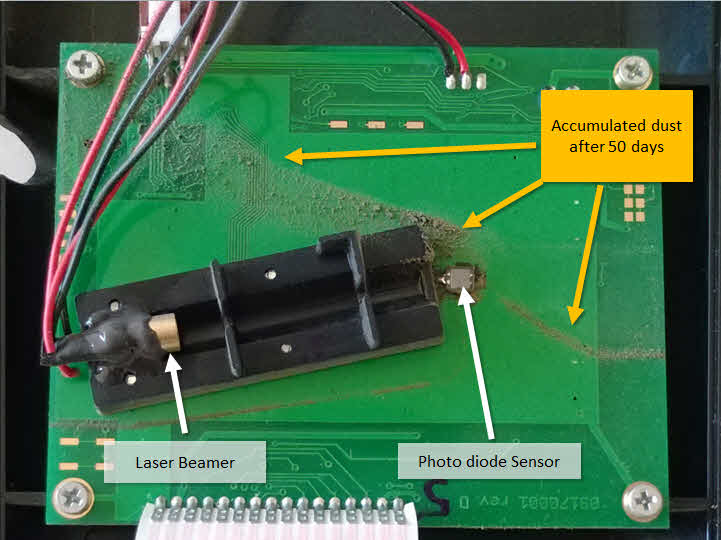
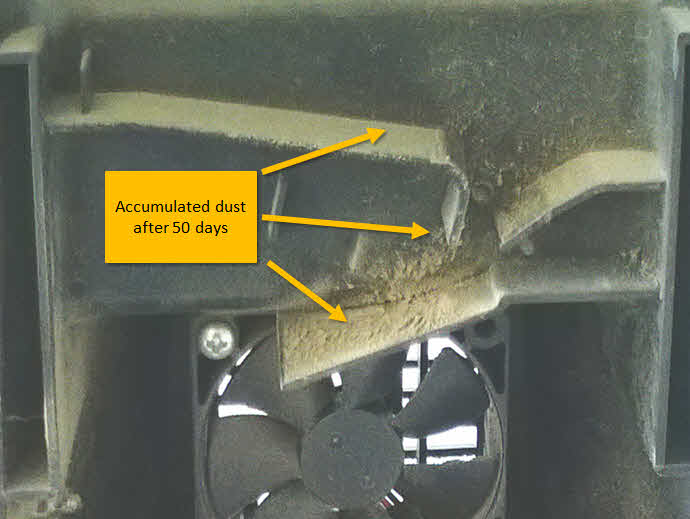
-Beijing dust impact on the Dylos air particle counter internal structure-
Das Ergebnis der Reinigung der inneren Struktur mit einer feinen Bürste würde eine erstaunliche Menge Staub erzeugen – und das bereits nach 50 Tagen Experimentieren im Freien. Denken Sie einfach daran, dass es das ist, was Sie atmen ...
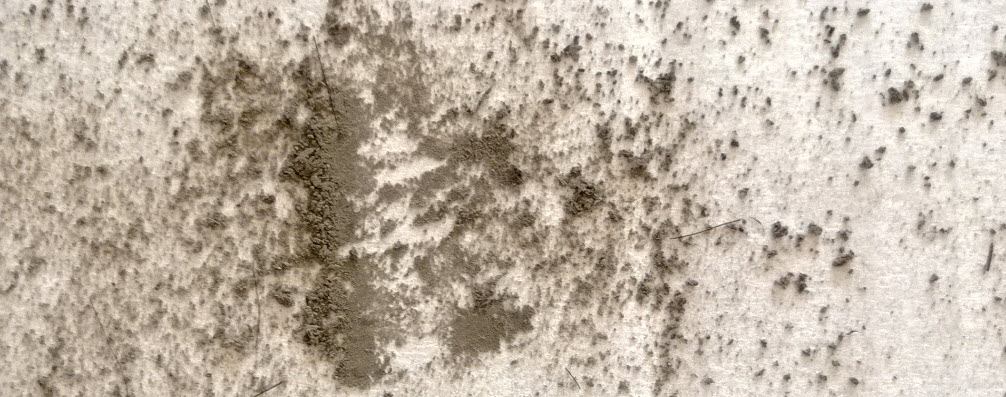
-The real Beijing dust... the one Beijiners breathe during heavy pollution day!-
Tatsächlich ist es keine Überraschung, dass eine solche Reinigung und Wartung an den Dylos-Geräten durchgeführt werden muss, da selbst die sehr teuren BAM-Geräte eine monatliche Wartung durch erfahrene Bediener erfordern.
--
Der folgende Teil wurde 10 Tage nach Veröffentlichung des ersten Beitrags hinzugefügt:
Seit der Reinigung sind nun 10 Tage vergangen und die Situation hat sich hinsichtlich der Korrelation zwischen BAM und Dylos definitiv verbessert. Aus der Grafik unten, die die Messungen vor und nach der Reinigung zeigt, zeigt die mit Nummer (2) gekennzeichnete Zone eine sehr gute Ähnlichkeit (Korrelation) zwischen BAM und Dylos. Bei starker Verschmutzung gibt es jedoch immer noch Anzeichen einer Nivellierung (Abweichung der Messung), wie durch die Zonennummern (1) und (3) hervorgehoben. Die Abweichung scheint jedoch nach der Reinigung (Zone (3) ) weniger schlimm zu sein als vorher (Zone (1) ). Wir kontaktieren die Firma Dylos, um sie zu diesem Nivellierungsphänomen zu konsultieren, und werden diesen Beitrag später aktualisieren.
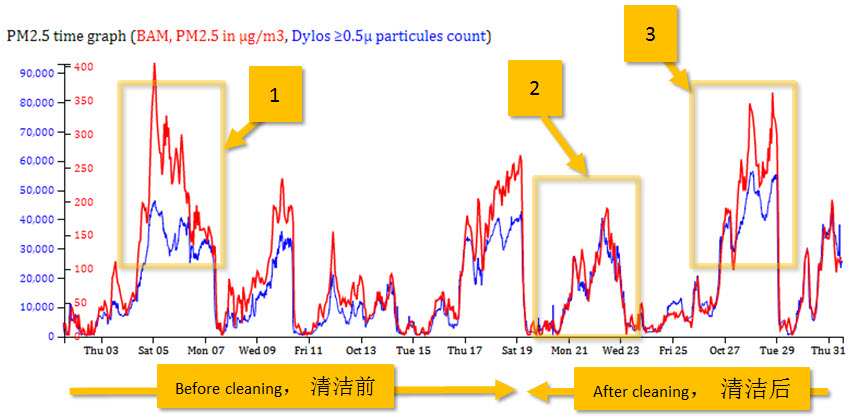
(Click on the picture to open the real time version)
--
